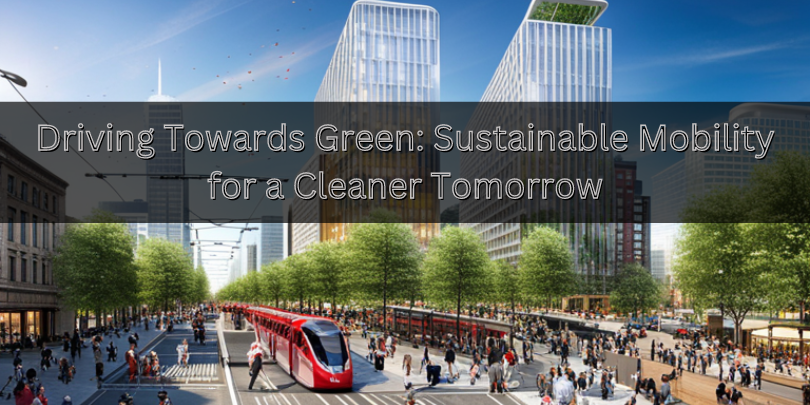Steering Towards a Greener Tomorrow: The Role of Driving in Modern Transportation
The hum of engines, the rhythm of wheels against asphalt, and the freedom of the open road have long defined our modern era. Yet, this era also brings with it an undeniable reality: the need for solutions that tackle the escalating concerns of climate change. Transportation, especially our collective driving habits, stands as a significant contributor to greenhouse gas emissions. As our roads and highways buzz with activity, the urgency to pivot toward green transportation grows. It’s not merely a choice; it’s an imperative. Let’s navigate the route to understanding what makes transportation green and why it’s so crucial for our planet’s well-being.
Understanding Driving a Green Transportation
At its core, green transportation or sustainable mobility zeroes in on minimizing environmental harm while maximizing efficiency. Simply put, it’s about moving smarter. From electric cars to efficient public transit, various solutions promote sustainability.
1. Electrifying the Roads with Electric Vehicles (EVs)
Electric vehicles (EVs) are revolutionizing the way we drive. Powered largely by renewable energy sources, EVs sideline tailpipe emissions. This shift, fueled by advancements in battery technology and the sprouting of charging stations, presents a promising avenue for curbing greenhouse emissions.

2. Embracing Public Transport
Public transit isn’t just for urbanites. A robust public transportation network can significantly cut down single-vehicle trips, unclogging traffic and slashing emissions. Investing in buses, subways, and light rail systems, paired with incentives like reduced fares, can supercharge sustainable mobility. Moreover, for those shorter jaunts, why not consider walking or cycling? Cities can further bolster these choices by carving out dedicated bike lanes and cultivating pedestrian-friendly zones.
3. Riding Together with Carpooling
Ridesharing and carpooling aren’t mere trends. They’re smart, eco-friendly alternatives to driving alone. By pooling rides, we’re not just saving on fuel costs. We’re reducing the number of cars on the road, diminishing emissions per passenger mile. Tapping into technology, advanced data analytics, and connectivity, today’s transportation systems can optimize routes, reduce congestion, and slash energy consumption.
4. Autonomous Vehicles: The Future Beckons
Self-driving cars aren’t just sci-fi dreams. They’re inching closer to our driveways. By operating efficiently and safely, autonomous vehicles hold the potential to further trim down accidents and fuel wastage.
However, the road to green transportation isn’t without bumps. Challenges like the steep initial costs of EVs, underdeveloped charging infrastructure in certain areas, and the hesitancy to abandon personal vehicles need addressing.
But here’s the silver lining: sustainable transportation isn’t just about reducing emissions. It’s also about shaping cities that prioritize people over cars, promoting healthier lifestyles, and driving economic growth.
Take the Wheel: Drive Change Today!
Ready to make a tangible impact on our planet’s future? Embrace sustainable mobility and become a champion for change. Dive deeper, learn more, and join the green transportation movement at ecolonomics.org. Your journey towards a cleaner tomorrow starts with one click. Act now!
To truly steer clear of the devastating impacts of climate change, embracing green transportation isn’t just advisable; it’s essential. Ready to embark on this journey? Dive deeper into sustainable solutions at EAT Community. Drive green, for today and tomorrow.




7 Herbs & Spices that Help Reduce Your Body Fat Faster